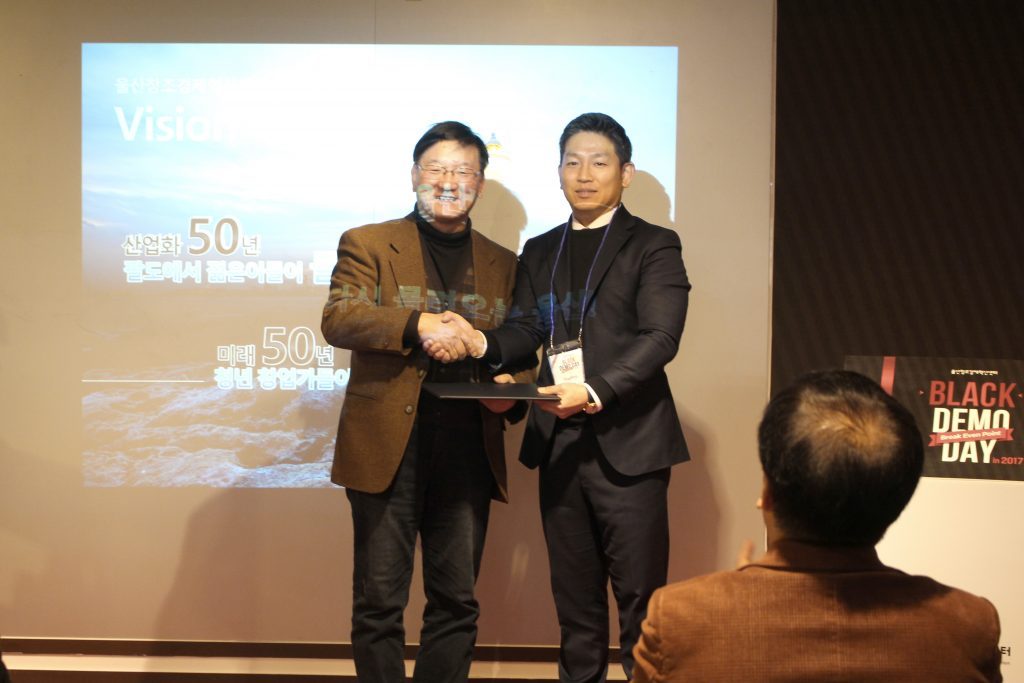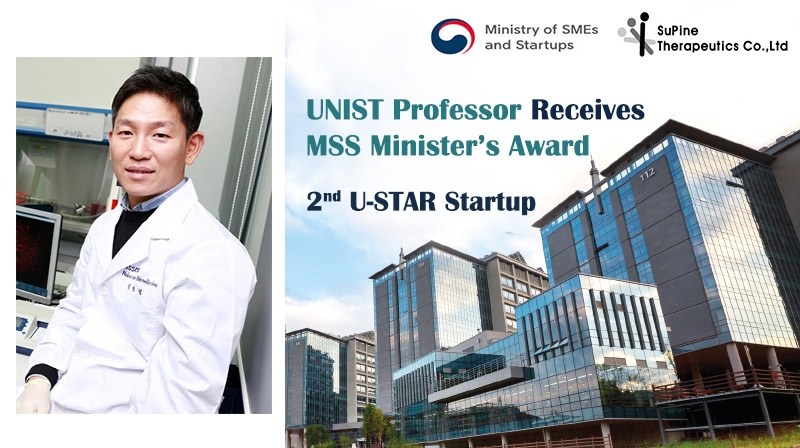Professor Jeong Beom Kim in the School of Life Sciences has been awarded by the Korean Ministry of SMEs and Startups (MSS) on December 14, 2017. The award was directly related to his recent research and development efforts in finding prospective cures for the patients with spinal cord injury.
Professor Kim has established a biotech venture, called SuPine Therapeutics Inc., where he promotes the commercialization of the treatment patch in treating patients with spinal cord injuries. This breakthrough has been selected as the grand prize winner of the ‘2nd U-STAR Competition’, an Accelerating Program of Ulsan Creative Economy Innovation Center, which led to him winning a Minister prize.
“It is a great honor for me to receive this award from the Ministry of SMEs and Startups,” says Professor Kim, the founder of SuPine Therapeutics Inc. “The estimated number patients with spinal cord injuries amounts to about 500,000 per year and we came up with this idea to help provide cures for them.”

Professor Jeong Beom Kim (right) at the award ceremony, which was held during the ‘Black Demo Day’ at Ulsan Creative Economy Innovation Center on Dec. 14, 2017.
Timing is of the essence when it comes to the early medical treatment of spinal cord injury, as significant damage to the spinal cord occurs within 48 hours, immediately following the accident. In search of early treatment of spinal cord injury, Professor Kim’s team has developed a patch that could be used in “golden hour” to prevent further progression of damages and optimize the change of neurogeneration.
SuPine Patch is a type of adhesive hydrogel patches with the purpose of regenerating the damaged spinal cords. It can be attached directly onto the damaged areas, following removal of bone fragments and this further prevents secondary spinal cord injuries.

SuPine Patch treats patients by helping the injured nerve cells around the spinal cords to regenerate. It can be also used within 48 hours, immediately following the accident, to avoid infectious complications and optimize the chance of survival.
This revolutionary patch technology is currently in a state that can proceed to Phase III clinical trials, as it contains FDA-approved materials for spinal cord regeneration. Besides, the therapeutic effectiveness of the patch has been also successfully tested in preclinical trials, using spinal cord injury animal models.
“If commercialized, patients with spinal cord injuries during the immediate phase are more likely to benefit from this patch,” says Professor Kim. “We expect that this technology can be used extensively in the promising field of regenerative medicine, including skin regenaration.”


















